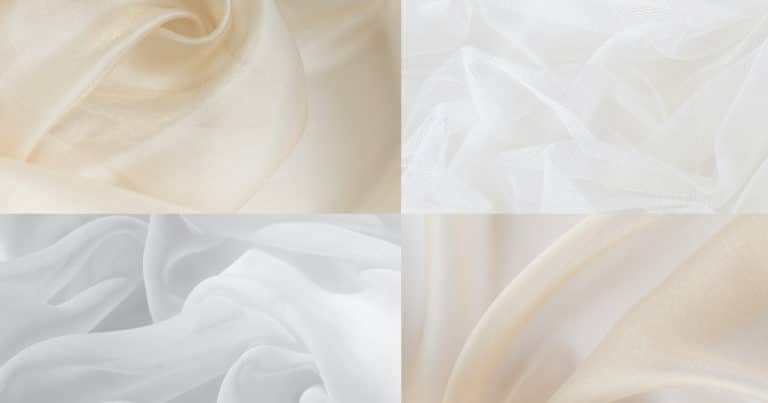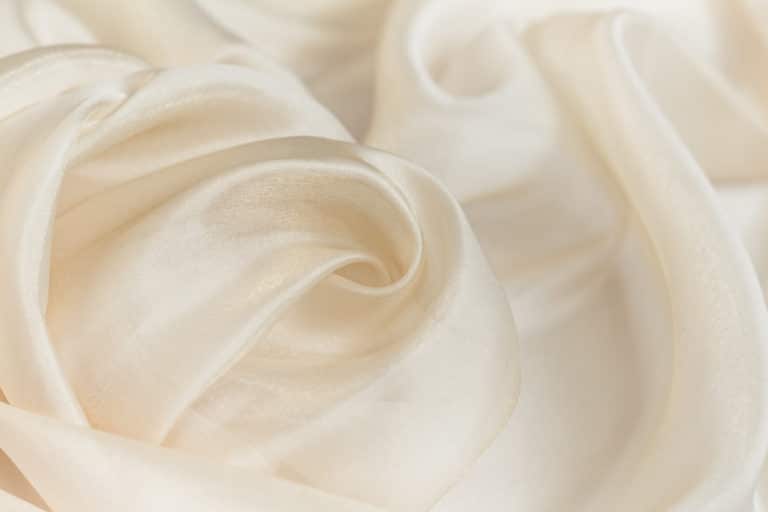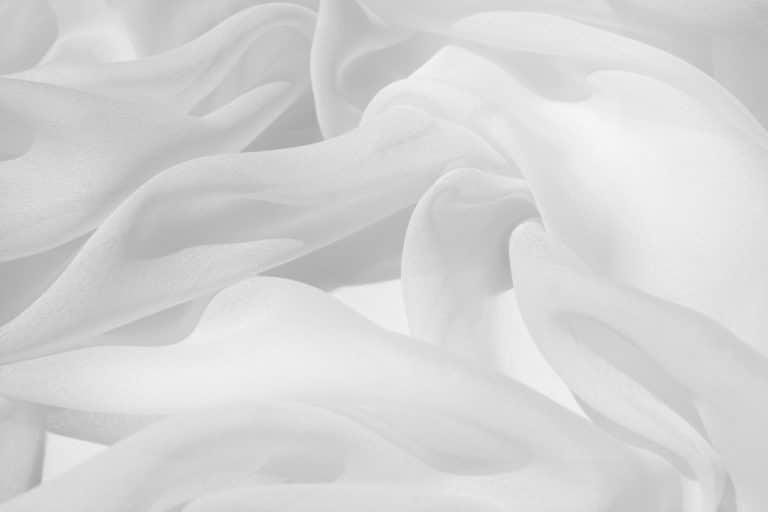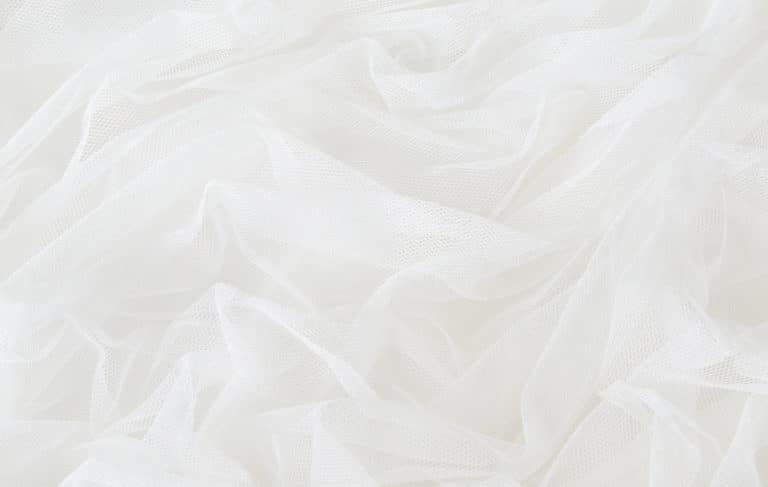
wedding dress fabrics: organza, chiffon, or tulle?
In your hunt for a wedding dress or during your research on styles, you will likely come across a large number of materials used in the design process. Three of the most popular wedding dress fabrics are organza, chiffon, and tulle. At a glance, and especially through a computer screen, it can be difficult to understand the differences between these materials. However, they are significant, particularly when it comes to their weight, feel and movement. Keep reading to help you determine which one(s) may suit your style and needs. In addition, we have compiled how each material is commonly used, or where it can be found on a wedding dress.

The most popular wedding dress fabrics are organza, chiffon, and tulle.
Wedding dress fabrics 101: organza.

Traditionally made from silk, organza can also be made with polyester or nylon. Although it is not quite transparent, it is sheer and will have a smooth but shiny appearance. Made using a plain weave, it is stiffer than chiffon and has no stretch. It often lends some structure to the design, although the material will still drape. For this reason, organza is often used on gowns as a lining beneath other materials to lend support without significantly altering the shape. It can also be used as the material for gorgeous see-through sleeves, or dramatic ruffles on a train. This being said, brides should be cautious of the tendency for organza to wrinkle and snag. On the other hand, it is less prone to water or heat damage and is quite simple to press. Organza is also found on romantic or ethereal style dresses since the midweight material is dainty and crisp.
Uses for Organza:
- Skirts, to create a shape.
- Trains.
- Veils.
- As an overlay.
- Lining, to create dimension.
Here are a few fun visuals! This video from the Mood Fabrics channel shows organza in more detail (we made a GIF for you below), and this video by cosplayer Koumori actually shows the difference between chiffon and organza.

Wedding dress fabrics 101: chiffon

For a drape that is incredibly fluid and soft, look for chiffon. Made from either silk or nylon, this lightweight wedding dress fabric is a favorite for gowns meant to flow. It is also quite sheer, so it often has a lining. With a very fine weave, it is almost slippery to the touch, and is smooth with some elasticity. Although chiffon is not particularly easy to wrinkle, brides will have to be cautious to avoid snags, as the material can fray very easily. Otherwise, those who opt for chiffon as a bridal material will enjoy the near-weightless feel of the material, perfect for seasons with soaring temperatures. It shines on more simple destination intended dresses, or for delicate fairy-tale styles. It moves like a dream- not unlike the wings of a butterfly, and therefore looks amazing on sheath and A-line silhouettes meant to move and flow freely.
Uses for chiffon:
- Veils.
- Skirts.
- Layers, or as an overlay.
- Sleeves and other accents.
Here is a video about silk chiffon, and a GIF to show the movement of this gorgeous fabric below, courtesy of Mood Fabrics. You can already see how much more movement it has compared to organza, which however boasts a little more sheen.

Wedding dress fabrics 101: tulle

What comes to mind when you hear the word tulle? Many people immediately envision the white drapery used to decorate at events, especially weddings, particularly to tie ribbons. That… or a ballerina’s tutu. None of these are especially reassuring ideas, but we are here to help you make the mental leap. Indeed, tulle fabrics vary in texture, as they have several purposes. Harder tulles can give poofy skirts some fullness; however, the bridal tulle mostly used these days is a gorgeous and airy fabric, not the stiff fabric tutus are made out of. Made from woven, nylon, knit or silk mixes, tulle is a sheer material. Upon close inspection, it is an open weave that looks like netting. Tulle drapes nicely as it is flexible, and yet it can still hold volume and shape relatively well. In comparison, it is not as stiff as organza but is slightly stiffer than chiffon. Considered a lightweight fabric, it tends to lend an airy look and feel; it is ideal for weddings that will take place during warm weather seasons (like our bride Tagèle’s super airy A-line number).
Uses for tulle:
- Veils.
- To mix with other materials, or as an overlay.
- Various skirt styles, to create airy volume and fullness.
- Sleeves and other accents.
- Skirt and dress slips.
If you need help determining which material is the best choice for your wedding dress, let JoSaBi Mariées assist you! During our JoSaBi design process, we get down to the nitty-gritty details in order to craft a dress that not only suits your personal style but also your unique needs. Beginning with a virtual consultation, our team captures your vision and helps you refine it. Picking the right fabric is an inherent part of the process, and we help you make a choice, as well as ship samples to your door! Select a date and time for your free consultation today, or contact us at [email protected] with any questions.
Thanks for stopping by today, and we hope this article was helpful! Please leave any questions you may have below; looking forward to hearing from you!
Best,
JoSaBi


